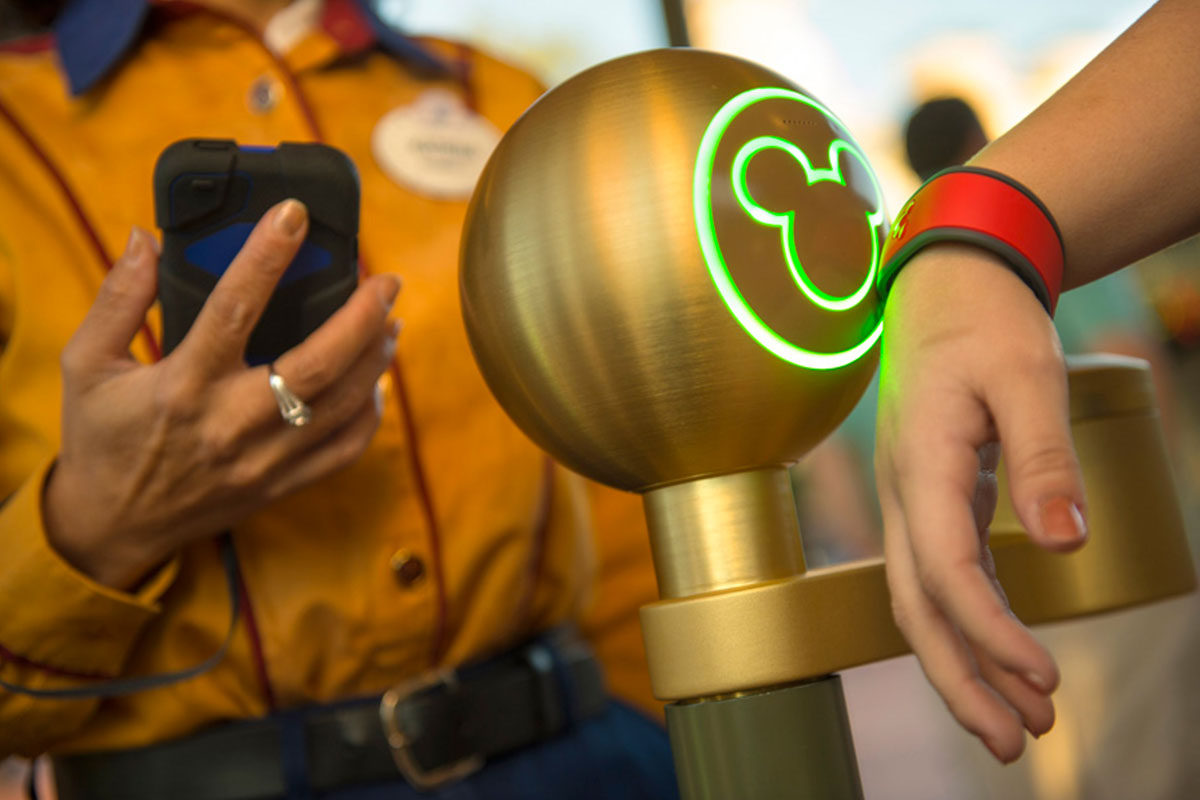Disney’s parks in the US are incredibly popular. Due to this popularity mainly at peak vacation dates, waiting times to enter the park or go into certain rides can be excessive. In 2008 Meg Crofton, president of Walt Disney World requested research be done into ways to help relieve these ‘customer pain points’.
The development team came up with RFID wristbands called MyMagic+. Visitors to Disney World would be able to buy wristbands with RFID chips that had several functions within the park. It would function as a hotel key, automatic payment system, and even allow visitors to make reservations at certain rides so that they could enter them immediately at their designated time and did not have to wait in line. The investment for this project was significant, a $1 billion budget was drawn out to create and launch MyMagic+. The question is, was this large investment worth it?
According to Disney’s financial report of 2015 they are currently still losing money to MyMagic+. However the investment is still relatively new, so this is not out of the ordinary. Customers are very positive about the MyMagic+ experience, and waiting times have been cut significantly. Waiting times at the entrance of the park have been cut by up to 35%. More than 18 million guests have now used the MyMagic+ wristbands.
However the problem with technology now a days is that it becomes obsolete very quickly. RFID technology is now compatible with most modern day smartphones. When asked if MyMagic+ would be expanded outside of Walt Disney World, Disney executives answered that it would, but most likely in different ways. They acknowledge that smartphones are most likely the way to go. In the new $5.5 billion dollar park in Shanghai, that just opened this spring, Disney will not be introducing the wristbands. Instead the park will make use of a mobile application and smartphones. Disney will also not be introducing the wristbands in its other two parks in California.
MyMagic+ was an interesting approach to applying the internet of things to an entertainment park. Whereas it does make the park more efficient and result in more customer satisfaction, it may have been the wrong way to go about using this technology. If Disney had made use of smart phones from the beginning onwards, investment costs would most likely not have been as high. MyMagic+ might have been a cheaper project and might have had better business results. In the end it is still a very interesting case related to the internet of things to look at, and many companies, including Disney itself, can learn from the project.
Sources:
Disney’s Annual Report 2015 – https://ditm-twdc-us.storage.googleapis.com/2015-Annual-Report.pdf
Bloomberg Report MyMagic+ – http://www.bloomberg.com/news/articles/2014-03-07/disney-bets-1-billion-on-technology-to-track-theme-park-visitors
Themepark Report MyMagic+ – http://www.themeparktourist.com/news/20141107/29594/5-important-facts-tucked-away-disney-s-quarterly-and-yearly-earnings-report
Steven Van Belleghem About MyMagic+ – https://www.youtube.com/watch?v=mtQKVEk1aig
Orlando Sentinel on MyMagic+ – http://www.orlandosentinel.com/travel/attractions/the-daily-disney/os-disney-magicbands-phones-20160408-story.html
Shanghai and MyMagic+ – http://www.bloomberg.com/news/articles/2016-01-10/why-disney-won-t-be-taking-magic-wristbands-to-its-chinese-park


Hey Mark, thanks for sharing this blog post!
Although I do think that the Internet of things will lead to all kinds of positive things, I am not so sure of the resulted outcome of this experiment with Magic+. Disney got a lot of complaint from frequently visiting customers as well (althoug far less than the compliments by new customers) because Magic+ took away the spontanity of visiting the amusement park.
At Disney Park you had the possibility to choose if you wanted to buy the Magic+ band, and with that band you advantages like the reservations on attractions as you mentioned. But people who had not bought the Magic+ band still had to stand in line. Can you imagine what whould happen if all those people bought a band? The dynamics of the park would totally change as people won’t be standing in line anymore and have to look for other places to stay, like restaurants (as it is not possible to go to another attraction if everyone reserves a spot for an attraction).
What do you think will happen in the other amusement parks now they will use mobiles in stead of the Magic+ bands?
Hi Mark,
Thank you for your post, I found it really interesting to learn about how RFID technology can be applied in the entertainment park industry! I think the three main attraction points of the Disney RFID wristbands are definitely the efficiency gains, personalization, and ability to analyze customer data. When reading more about the topic, I also learnt that children really liked the wristbands; as it is a tangible representation of the Disneyland experience for them (Kuang, 2015). It could also have a safety advantage; children frequently get lost at entertainment parks, and an RFID wristband may help family members to track them down and find them again. However, it is indeed hard to tell whether the upfront investment costs will eventually be offset by the long-term benefits from these points.
I agree with the idea that a mobile application could have been a better solution to the identified business needs. A mobile application may even lead to higher customer satisfaction than a wristband, as it would allow the customer to gain insights about their itinerary at any time and get a better visual representation it. It would also be likely to involve lower implementation costs; and Disney would still be able to extract meaningful customer data from it. I am curious how it will work out for them!
Kuang, C. (2015). Disney’s $1 Billion Bet on a Magical Wristband. [online] WIRED. Available at: https://www.wired.com/2015/03/disney-magicband/ [Accessed 13 Oct. 2016].